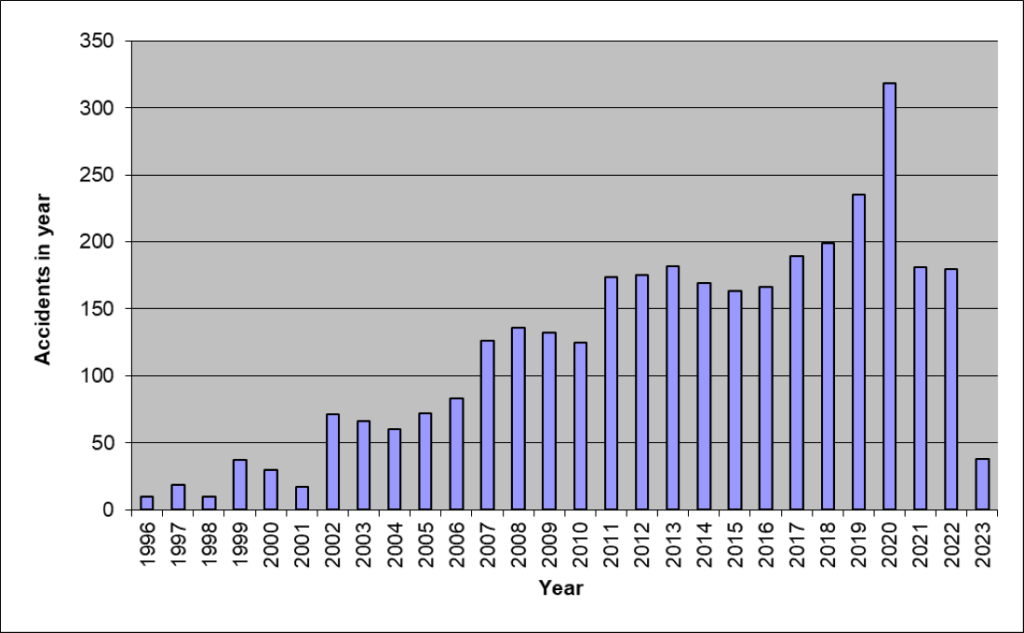It is argued by opponents that nuclear power can be replaced by low-risk renewable energy sources. Although nuclear power per produced hour of electricity has a mortality rate in line with both solar and wind power. The question is what does the data show. Do you prevent a risk?
Of course, an accident on a single wind turbine is not so fatal. But each wind turbine produces very little energy. Thus, a great many must be used in relation to a nuclear power plant.
All documented cases of accidents with wind turbines that have been found and confirmed through press reports or official information from 1996 to 31 March 2023 are a total of 3396 [1]. As shown in the figure below.

As more wind turbines are built, more accidents are bound to happen. Which the trend in the data confirms. The average annual accidents were 81 in the period 2002-2007 inclusive; 148 accidents per year from 2008-2012 inclusive; 174 accidents per year from 2013-2017 inclusive, and 222 accidents per year from 2018-2022 inclusive.
These accidents are also fatal, with a total of 229 deaths, which are distributed as follows:
- 135 were the wind industry and direct workers (divers, construction, maintenance, engineers, etc.) or owner/operators of small turbines.
- 94 were “public fatalities”, including workers not directly dependent on the wind industry (e.g. transport workers, etc.).
The wind turbine industry thus has a significantly higher mortality rate than nuclear power and thousands more accidents than the nuclear power industry, and that includes Chernobyl and Fukushima.
Nuclear power has a significantly higher safety culture than both fossil energy and renewable energy. This means that the death rate from occupational accidents during construction, mining and transport is significantly lower. Plus much less nuclear power must be used due to the high energy density of the fuel.
This means that if we replace nuclear power with wind power, we must expect that the overall death toll will increase. Since wind power requires additional baseload for at least the 50% of the time when the wind is not generating. This is supplied 1:1 by fossil energy sources, coal, oil and gas. The mortality for the fossil baseload must thus be added. Which is the case in Germany.




